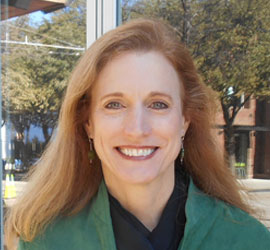Whether yo u’re naming your corporation or adding a new product, you have to go through the often-painful birthing process of finding a name that will work. One that hasn’t been taken. One that isn’t too close to another one. One that isn’t so descriptive that you can’t stop others from using something similar. One that is unique and won’t have to co-exist with 14 others in your industry. Often the sales goal of immediate consumer recognition is at odds with the long term marketing goal of having a trademark that stands out and is valuable over the long haul.
u’re naming your corporation or adding a new product, you have to go through the often-painful birthing process of finding a name that will work. One that hasn’t been taken. One that isn’t too close to another one. One that isn’t so descriptive that you can’t stop others from using something similar. One that is unique and won’t have to co-exist with 14 others in your industry. Often the sales goal of immediate consumer recognition is at odds with the long term marketing goal of having a trademark that stands out and is valuable over the long haul.
This article looks at the process and factors which go into picking a powerful trademark.
There are five categories of trademarks–Fanciful, Arbitrary, Suggestive, Descriptive and Generic:
- Fanciful marks are made up words, such as Xerox or Kodak. These are the most protectable and strong trademarks over time becauseothers have no reason to use these words in marketing their products. Often, trademark protection extends only in your industry. But if you have a fanciful mark, it may qualify for protection from dilution, and you might be able to stop companies from using your trademark even for products outside of your industry.
- Arbitrary marks take an existing word and apply it randomly to a product. Think Amazon for online retail and Apple for computers.
- Suggestive marks make some tenuous connection between the trademark and the product, but it takes a little imagination, such as CopperTone for sunscreen, 7-Eleven for a convenience store.
- Descriptive marks are where the problems start. This is just what it sounds like. The trademark describes an attribute or benefit of the product. Spray ‘n Vac. Park ‘n Fly. While it is possible to ultimately obtain registration for some descriptive marks, it is an uphill battle with no guarantees. You have to prove that through extensive exclusive use, your mark has “acquired secondary meaning” and no longer functions for the literal meaning of the words, but rather, as a source identifier for consumers.
- Generic words cannot be given trademark protection, and if a trademark becomes generic, it will lose protection. So, no one can register “Apple” for apples, or “Desk” for desks, and “escalator” and “aspirin” are no longer trademarks.
So, when it comes to picking your trademark, first, you brainstorm. You want to come up with a number of possibilities that meet the business objective. You plug them into a Google® search engine and see what comes up. You see if anyone is using the relevant .com domain names. Assuming your possibilities pass this test, then you talk to your trademark attorney, who will run a prelim search, which looks at registered and applied-for marks state and federal trademarks. Assuming no conflicts appear through this process, your attorney orders a full US search. A full search looks at not only registered marks, but those that are in use in your industry, including a wider range of domain names, with variant spellings. This is particularly relevant in the US, where registration is not required in order to have trademark rights. (Many other countries give trademark rights to the first company to register a mark.) If your trademark is cleared after a review of the full search, and in whatever other countries you might want to market, then you can move on to registration.
 Angela Washelesky focuses her practice on trademark prosecution and marketing law. She advises clients, from small entrepreneurial start ups to large multi-national corporations, with regard to trademark clearance, trademark prosecution, international trademark strategy, trademark enforcement, compliance with advertising and trade practice laws, including substantiation of claims, sweepstakes and contests, privacy issues, and dispute resolution.
Angela Washelesky focuses her practice on trademark prosecution and marketing law. She advises clients, from small entrepreneurial start ups to large multi-national corporations, with regard to trademark clearance, trademark prosecution, international trademark strategy, trademark enforcement, compliance with advertising and trade practice laws, including substantiation of claims, sweepstakes and contests, privacy issues, and dispute resolution.




